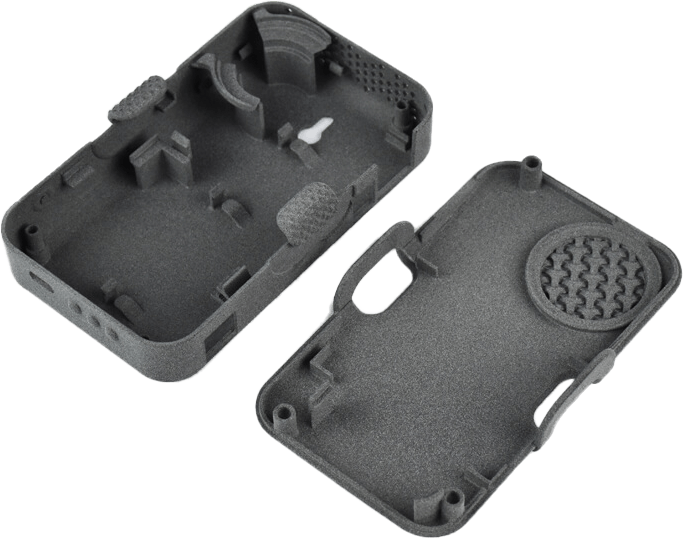When choosing to boost your prototyping process with 3D printing, you get the opportunity to use great alternatives to injection molding or CNC machining. Here are some useful 3D printing technologies to create your functional prototypes, and proof of concepts and accelerate your product development.
SLS (Selective Laser Sintering) is a type of additive manufacturing. Parts are created additively by sintering small polymer powder particles to fuse them locally. Your plastic object will be built up layer by layer based on your 3D model. SLS is an excellent tool for rapid prototyping. This technique is suitable for functional prototyping because it enables for production parts that are close to end-use quality while allowing for a high degree of valuable and sound design freedom. You will be able to create idea models and test parts. Complex designs can be prototyped using SLS.
SLS materials you can use for your prototyping process:
Multi Jet Fusion is an additive manufacturing method invented and developed by the company Hewlett-Packard (HP). It creates parts additively thanks to a multi-agent printing process. Your plastic part will be created layer by layer, according to your 3D model.
This technology allows you to cut costs while improving performance. Mechanical (e.g., prototypes, articulated items, geared systems), electrical, medicinal, ornamental, automotive, and even educational applications can all benefit from the Multi Jet Fusion 3D printing technology. You can easily boost your prototyping process using this technology.
MJF materials you can use for your prototyping process:
- PA11 HP : Approved for skin contact and good impact resistance
- PA12: Versatile, a perfect ally for rapid prototyping
- Ultrasint® TPU01: Ideal for flexible prototypes
Stereolithography (SLA) is one of the oldest 3D printing techniques ever developed. This additive manufacturing process uses a photochemical process to 3D print resin material.
SLA (Stereolithography) prototyping resin is ideal for creating rapid aesthetic prototypes. SLA is commonly used to create highly detailed artwork and non-functional prototypes, as well as molds for investment casting applications.
SLA material you can use for your prototyping process:
Fused filament fabrication (FFF), also known as fused deposition modeling (FDM) 3D printing, is a type of additive manufacturing (AM). The finished physical things are made using thermoplastic polymer filaments. To construct 3D printed parts layer by layer, the print head is moved under computer control to define the printed shape and selectively deposits melted filament material along a predetermined route.
FDM is the most widely used technology in most industries and has the largest installed base of 3D printers worldwide. This 3D printing process, which is mostly used for prototyping, may be applied to a wide range of industries, from jewelry to automotive to medical. FFF / FDM is frequently used in rapid manufacturing and prototyping. Rapid prototyping facilitates iterative testing, and rapid manufacturing can be a more cost-effective option for small batches.
FDM material you can use for your prototyping process:
Big Rep PLA: Adapted to manufacture bigger prototypes


 Connect with Google
Connect with Google Connect with Facebook
Connect with Facebook